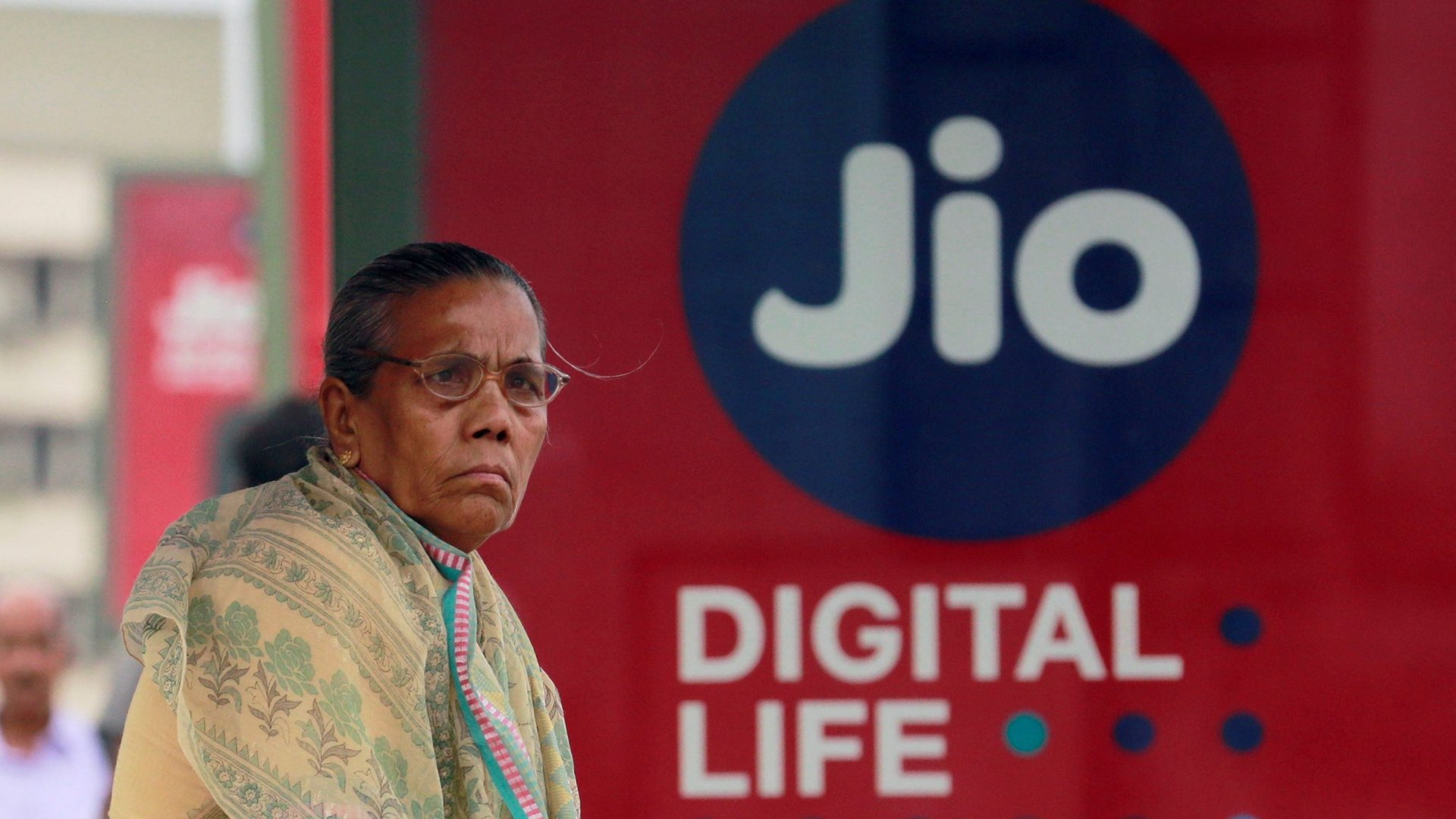Jio giveth India its data revolution. Now Jio taketh away?
India’s digital dream may be in danger.


India’s digital dream may be in danger.
Yesterday (Nov. 19), the country’s largest telecom firm, Reliance Jio, said it will increase tariffs, following in the steps of rivals Vodafone Idea and Bharti Airtel that announced similar plans a day before.
“Like other operators, we will also… take measures including an appropriate increase in tariffs in the next few weeks,” Jio said in a press release.
The firm, led by India’s richest man Mukesh Ambani, is the country’s only profitable telco after Vodafone Idea and Airtel posted massive losses of Rs50,922 crore ($7 billion) and Rs23,044 crore, respectively in the September quarter. While the losses were magnified by a recent supreme court order that forced the firms to set aside Rs54,127 crore in pending dues to the government, both companies have been under pressure due to their rock-bottom tariffs.
The latest hike signals a possible end to the brutal price war unleashed by Jio in 2016, but it also casts a shadow on the future of various services that have thrived on cheap data.
What about digital India?
Jio has been a key enabler of India’s data revolution with its offerings of free voice calls and affordable, high-speed data. It also had a wide array of video and audio content and services.
With the launch of its 4G-enabled feature phone—the JioPhone—in 2017, it facilitated first-time access to the internet for a majority of the population. The built-in apps on the phone allow consumers easy access to Facebook, YouTube, and Google.
Jio’s launch also triggered the demand for content on over-the-top (OTT) platforms. Amazon Prime, Netflix, Eros Now, Voot, and Hotstar, among many others, have taken off in a big way.
The proof is in the numbers: India’s monthly wireless data usage rose from 200 million GB a month in June 2016, to 1.3 billion GB a month in March 2017, according to the Internet Trends Report 2017 by Kleiner Perkins, an American VC firm.
“Bandwidth-intensive music and video streaming applications saw a dramatic growth following the launch of Reliance Jio in India,” the report stated. “For instance, music streaming app Gaana’s streams per month grew three times between June 2016 and March 2017. Similarly, Hotstar’s daily active users grew over four times during the same period.”
Another report in June this year by Swedish telecom equipment maker Ericsson claimed that India had the highest average data usage per smartphone in the world—9.8GB per month.
“Improved device penetration, affordable data tariffs, and increase in data-intensive content such as videos are driving this growth,” the report suggested. “Triggered by Reliance Jio’s entry, India’s data consumption has exploded, with all other operators also offering cheap data. Mobile data traffic is growing as more Indians spend time streaming videos, which is expected to account for 75% of overall mobile traffic by 2024.”
India now accounts for 12% of the world’s population active on the internet, as per an annual report by venture capitalist Mary Meeker in June this year.
The data revolution has also led to a boom in digital payments on platforms like Paytm.
However, the imminent tariff hike by the country’s three biggest telcos could apply the brakes on this growth trajectory. By Jio’s own admission, there are still over 400 million Indians who have not benefited from the advent of the improvement in data consumption and 4G coverage.
Not the first time
This isn’t the first time Jio will be increasing prices. In October, it had started charging customers six paise a minute for calls to a competitor’s network.
The company, at that time, said it was taking this step due to “regulatory uncertainty” over Interconnect Usage Charges. The IUC is a charge paid by one telecom operator to another when its customers make outgoing mobile calls to the rival operator’s network.
While none of the telcos have indicated the extent of the current hike, analysts expect that the customers of Airtel and Vodafone Idea will witness a steep hike.
“There is a possibility of (a) 15% hike by Vodafone Idea and Bharti Airtel in order to go back to the same premium as it used to enjoy over Reliance Jio,” analysts at brokerage firm Motilal Oswal Institution Research said.